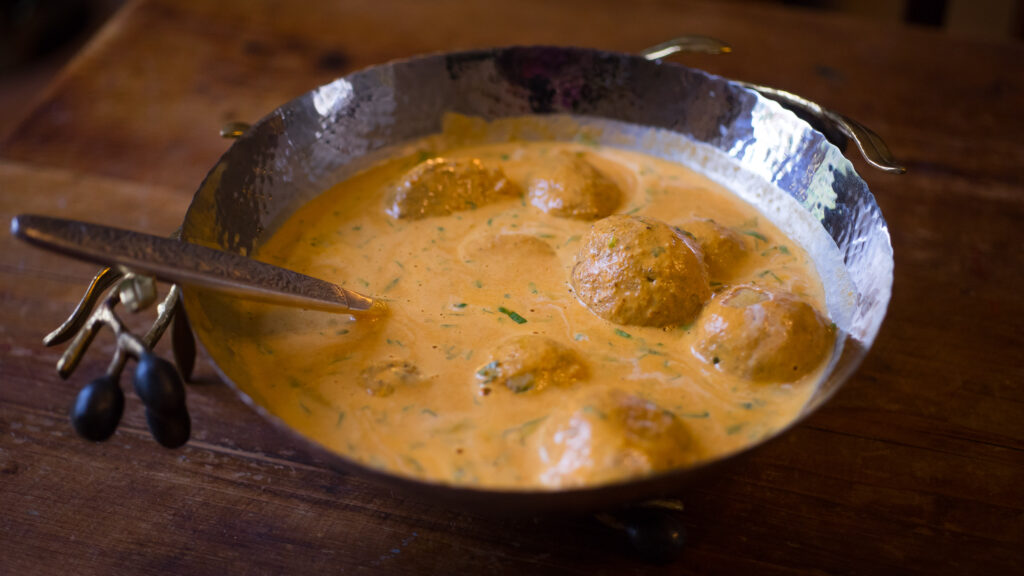
I want you to close your eyes and take a deep breath. Now, imagine a resplendent garden bursting with the vibrant colours of the Damask rose. Take another deep breath as the intoxicating sweet and floral aroma imbues your soul, whisking you back in time 500 years to the time of Nur Jahan, the queen of the Mughal Emperor Jahangir. The queen who stood in this rose garden and upon being overcome by the heady aroma of the roses, requested her physician to concoct a sherbet so that she could savour this ethereal aroma whenever she wished.
The scent legacy of the grand Mughal Empire is as timeless and majestic as their cuisine. Long before the advent of technology, Mughal kitchens perfected the art of slow and intricate cooking that reflected the finest produce across the empire. There are accounts of rice being boiled in rose water before adding spices, jasmine flowers and copious amounts of silver leaf to make the show stopping biryanis and pulaos; whole game birds would be coated in a sandalwood paste and Fuller’s Earth to clean and scent them before marinating further with saffron, lime and spices. Whilst the queens bathed in rose water, the courtesans adorned their necks with bejewelled vials of gold &silver filled with various attars.

The third Mughal Emperor, Akbar the Great (16th c) was known to be a connoisseur of fine food with Turkish, Persian and Indian flavours gracing his table. He even had a department in his court responsible for developing scents for culinary purposes. In deference to his various Hindu queens, Akbar became a quasi-vegetarian and his alliances saw many regional influences work their way into the palace kitchens such as Paneer Naranj, a paneer kofta with nuts and spices bathed in a rich onion & yoghurt gravy scented with saffron & screwpine. The Portuguese had, by then, introduced potatoes and chilli to the Indian culinary spectrum and both find their way into this recipe, one of my favourite vegetarian dishes from the Mughal repertoire. Here the richness of the kofta with it’s delicate fragrance of cardamom and cloves is accentuated by a cashew gravy bursting with saffron and brightened with a top note of kewda or screwpine. A floral water obtained from the production of screwpine attar, kewra is reminiscent of rose, hyacinth and honey with a sparkling crispness.
Best eaten with rice, you can add a whiff of decadence to this dish by adding a splash of rose water to the rice during cooking.
PANEER NARANJ
Spiced paneer & nut dumplings in a fragrant saffron & screwpine sauce
Ingredients (Serves 4)
Dumplings
Paneer, grated – 250g
Pistachio, chopped – 35 g
Ground Almonds – 40g
Cloves – 3, ground
Green cardamom, ground– ½ tsp
Potatoes, boiled whole, chilled and grated – 150g
Raisins – 25g
Ground black pepper – 1/2 tbsp
Gram flour, lightly toasted in a pan– 1.5 tbsp
Ground asafoetida– pinch
Salt – 1 tsp
Curry
Spice paste
Onion sliced – 1
Cashews – 1/2 tbsp
Cloves – 3
Cinnamon – 1/2 inch
Pepper – 1/2 tsp
Green Caramom – 2
Black Cardamom – 1
Ghee – 1 tbsp
Ginger, finely chopped – 1 tsp
Fennel seed, ground – 1/2 tbsp
Coriander seed, ground – 1/2 tbsp
Jaggery or soft brown sugar – 1 tsp
Natural yoghurt – ½ cup whisked with ½ tbsp gram flour
Deggi Mirch chili powder (or any mild chilli powder) – 1 tsp
Turmeric – ½ tsp
Saffron strands– 1/2 tsp
Kewda/Screwpine water – 1 tsp (available at all Indian grocery stores and many supermarkets)
Single cream – 300ml
Garam masala – ¼ tsp
Salt – 1 tsp
Method
To make the dumplings, mix and knead all the ingredients in the dumplings section until thoroughly mixed. Divide the mix into 10-12 and shape into balls, making sure to squeeze and pack the mix as you shape them. Chill the dumplings for an hour before deep frying them until golden. Drain on kitchen paper and reserve.
To make the spice paste, heat the ghee in a pan and add the whole spice in the spice paste section. When they start to crackle, ad the onion and fry until the onion is browned. Add the ginger, turmeric and yoghurt and cook for a further 5 minutes, stirring constantly. Add the deggi mirch/chilli powder, single cream, sugar, salt, saffron, fennel coriander, and a splash of water. Bring the mix to a gentle simmer and then blend until you get a smooth sauce. Strain the sauce through a sieve and return to the pan. Add the garam masala and kewda water. Before serving, add the fried dumplings to the sauce and gently warm through. Adjust the seasoning if necessary. Finish with a squeeze of lime and freshly chopped coriander.

